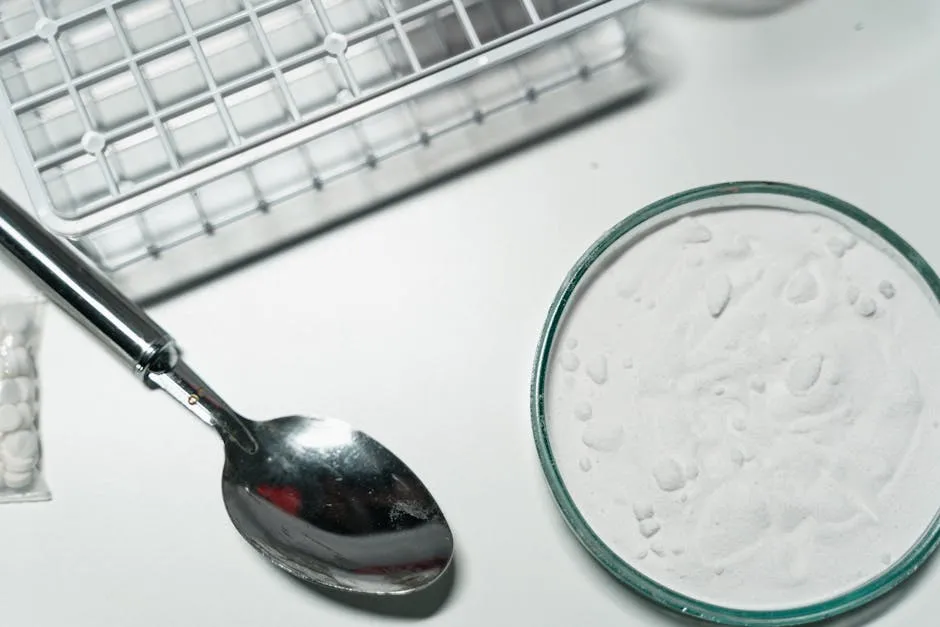
Why Is Cocaine So Addictive?
Introduction
Cocaine is a potent stimulant known for its powerful effects. It has a high potential for addiction and can lead to severe consequences for users. In this article, we’ll explore the reasons behind cocaine’s addictive nature and what makes it so difficult to resist.
If you or someone you know is struggling with addiction, understanding the journey to recovery is essential. Consider picking up a copy of “Addiction Recovery Management Workbook” by C. Scott McMillan. This workbook is a fantastic resource for anyone looking to navigate the often rocky road of recovery.
Summary and Overview
Cocaine comes in two main forms: powder and crack. Powdered cocaine is typically snorted or injected, while crack is smoked. Both forms are derived from the coca plant and significantly impact the brain’s chemistry.
Cocaine use is prevalent, with millions of people worldwide struggling with addiction. The psychological effects include intense euphoria, increased energy, and heightened alertness. However, the drug can also lead to severe anxiety, irritability, and paranoia.
Several factors contribute to cocaine addiction. The drug’s impact on brain chemistry, particularly its interaction with neurotransmitters like dopamine, plays a crucial role. Additionally, environmental influences, psychological factors, and genetic predispositions can all heighten the risk of developing a dependency.
Understanding these factors is essential for addressing cocaine addiction effectively. For those seeking to deepen their understanding of addiction and recovery, “Clean: Overcoming Addiction and Ending America’s Greatest Tragedy” by David Sheff is a must-read.

The Mechanism of Cocaine Addiction
How Cocaine Affects the Brain
Cocaine primarily affects the brain by blocking the reuptake of dopamine, a key neurotransmitter associated with pleasure. When cocaine enters the system, it causes dopamine levels to surge, enhancing feelings of euphoria and reward. This overstimulation activates the brain’s reward system, reinforcing the desire to seek out the drug.
Moreover, cocaine also impacts serotonin and norepinephrine, contributing to its complex effects on mood and behavior. The combination of these neurotransmitter disruptions can create intense cravings and compulsive drug-seeking behavior, making recovery challenging.
The Process of Tolerance and Dependence
Repeated use of cocaine leads to increased tolerance. This means that over time, users need more of the drug to achieve the same effects. The brain adapts to the presence of cocaine, causing significant changes in its chemistry. As dopamine levels rise with each use, the brain begins to rely on cocaine to feel pleasure. This physical dependence can make quitting extremely challenging, as the brain struggles to function without the drug.

The Role of Withdrawal Symptoms
When someone stops using cocaine, they often experience withdrawal symptoms. Common symptoms include fatigue and depression, making it hard to cope with daily life. These uncomfortable feelings can lead users to turn back to cocaine to avoid the distress. The cycle of using cocaine to escape withdrawal illustrates how powerful addiction can be. Breaking free from this cycle requires support and treatment.
For anyone looking for tools to aid in their recovery journey, check out “Addiction Recovery Tools: 52 Strategies for Maintaining Sobriety”. These strategies can provide essential support during the recovery process.

Psychological Factors Contributing to Cocaine Addiction
Positive Reinforcement
Cocaine’s pleasurable effects play a major role in reinforcing drug-seeking behavior. When users experience intense euphoria, they naturally want to replicate those feelings. This desire leads to a pattern known as “chasing the high.” Each time they use, they seek to reach that initial peak of pleasure, often resulting in increased consumption.
Psychological Dependence and Cravings
Psychological dependence is a key aspect of cocaine addiction. Users often feel a strong urge to use the drug, which can lead to a sense of losing control over their behavior. Cravings can be triggered by various factors, including stress and environmental cues. Additionally, mental health disorders such as anxiety and depression can exacerbate these cravings, making recovery even more difficult. Understanding these psychological factors is vital for developing effective treatment strategies.
For a deeper dive into personal growth and overcoming challenges, consider reading “The Gifts of Imperfection” by Brené Brown. This book encourages readers to embrace their true selves and let go of societal pressures.

Environmental and Social Influences
Social settings play a significant role in cocaine use and addiction. Parties, clubs, and gatherings often create an environment where drug use seems acceptable or even encouraged. Peer pressure can push individuals to experiment with cocaine, leading to continued use. Once the initial high is experienced, the allure of fitting in can keep users coming back for more.
Moreover, societal stigma surrounding addiction can complicate the journey to recovery. Many individuals feel ashamed to seek help, fearing judgment from friends or family. This shame can prevent them from accessing vital resources, further entrenching their addiction. For those feeling lost in this journey, “The Recovery Book” is an invaluable resource that addresses these concerns.

The Physical Impact of Cocaine Use
Short-Term Effects of Cocaine Use
Cocaine use produces immediate effects, such as intense euphoria and heightened energy. Users often feel more confident and alert. However, these pleasurable sensations come with serious risks. Short-term use can lead to cardiovascular issues like increased heart rate and elevated blood pressure. Users might also experience anxiety, paranoia, and irritability, which can complicate their social interactions.
If you’re looking for ways to manage stress and promote relaxation while navigating these challenges, consider investing in an Essential Oil Diffuser. Aromatherapy can help create a calming environment, making it easier to cope with stress.

Long-Term Health Consequences
Chronic cocaine use can inflict significant damage on both the brain and body. Long-term users may suffer from persistent anxiety, depression, and other mental health disorders. Additionally, the risk of severe health complications, such as heart attacks and strokes, increases with prolonged use. Cocaine can also lead to structural changes in the brain, impacting cognitive functions and decision-making abilities. These changes can make recovery more challenging, as the brain struggles to regain its normal function.
For those looking to better understand the mind-body connection, “The Body Keeps the Score” by Bessel van der Kolk offers insights into trauma recovery and healing.

Cocaine and Other Substances
Mixing cocaine with other substances, like alcohol, poses additional dangers. This combination can create a toxic byproduct known as cocaethylene, which increases the risk of heart problems and overdose. Many users mistakenly believe that mixing drugs can enhance their effects, but it often leads to unpredictable and life-threatening consequences. Understanding the risks associated with combining cocaine with other substances is vital for harm reduction and safety.

Signs of Cocaine Addiction
Behavioral Signs
Cocaine addiction often manifests through noticeable behavioral changes. Users may become secretive, hiding their drug use from family and friends. You might notice them withdrawing from social activities they once enjoyed. Financial issues often arise as they prioritize purchasing cocaine over essential expenses. This change can strain relationships, leading to conflict and resentment. Responsibilities at work or home may suffer as the addiction takes hold. The combination of secrecy, financial problems, and neglecting responsibilities can create a vicious cycle, further isolating the individual from support networks.
If you suspect someone is struggling with addiction, it’s essential to approach the situation with empathy and understanding. The journey to recovery can be more manageable with the right resources. Consider recommending “Beautiful Boy: A Father’s Journey Through His Son’s Addiction” by David Sheff. This heartfelt memoir sheds light on the challenges of addiction from a family perspective.

Physical Signs
Cocaine use can result in several physical signs that are hard to miss. Frequent nosebleeds often occur from snorting the drug, damaging nasal passages over time. Users might experience significant weight loss due to appetite suppression, which can alter their appearance. Other physical indicators include dilated pupils, increased heart rate, and restlessness. Long-term health impacts can lead to severe issues, such as respiratory problems and cardiovascular complications. These changes can drastically affect one’s overall health and well-being, making it crucial to recognize these signs early.
For anyone looking for a creative outlet to cope with stress and anxiety, consider trying an Adult Coloring Book. Coloring can provide a therapeutic escape and help clear the mind.

Recognizing the Need for Help
Recognizing the signs of cocaine addiction is vital for timely intervention. If you or someone you know displays these behavioral or physical changes, it’s essential to seek help. Early intervention can significantly improve the chances of recovery. Acknowledging the problem is the first step toward healing. Support from friends, family, and professionals can pave the way for effective treatment. Remember, addiction is a complex issue, and reaching out for help is a sign of strength. There’s no shame in seeking assistance to overcome this challenge.

Detoxification and Rehabilitation
Detoxification is the first step in recovering from cocaine addiction. During this process, the body clears the drug from its system. It’s crucial for alleviating withdrawal symptoms. This phase can be uncomfortable, but medical supervision helps ensure safety and comfort.
Treatment options vary between inpatient and outpatient care. Inpatient programs provide 24/7 support in a structured environment. This is ideal for those with severe addiction or co-occurring mental health issues. Outpatient programs offer flexible treatment while allowing individuals to maintain daily responsibilities. Choosing the right option depends on personal needs and circumstances. For insights into effective treatment methods, check out “The 12 Steps: A Guide for Everyone”.

Relapse Prevention Strategies
Aftercare and ongoing support are vital for maintaining sobriety. Recovery doesn’t end with detox; it’s an ongoing journey. Aftercare programs help individuals stay connected to support networks, which can significantly reduce the risk of relapse.
Effective strategies include identifying triggers and developing coping mechanisms. Mindfulness techniques, therapy, and regular participation in support groups can also help. Establishing a strong support system is key. It provides encouragement during difficult times and helps individuals stay committed to their recovery goals. For those interested in mindfulness, “Mindfulness for Beginners” by Jon Kabat-Zinn is a great starting point.

FAQs
What makes cocaine so addictive?
Cocaine’s addictive nature stems from its impact on brain chemistry. It primarily increases dopamine levels, which are linked to pleasure and reward. This surge creates intense feelings of euphoria, encouraging repeated use. Over time, the brain adapts, requiring more of the drug to achieve the same high. Psychological factors, including cravings and environmental triggers, also contribute to addiction.
How quickly can someone become addicted to cocaine?
Individual variability plays a significant role in addiction onset. Some may develop a dependency after just one use, while others may take longer. Factors include genetic predisposition, mental health conditions, and social environment. The rapid effects of cocaine can lead to a quick spiral into addiction, making it particularly dangerous.
What are the signs of cocaine addiction?
Cocaine addiction manifests through various behavioral and physical signs. Behavioral indicators include secretive actions, financial issues, and neglecting responsibilities. Physically, users may experience nosebleeds, weight loss, and increased heart rate. Recognizing these signs is crucial for timely intervention, as addiction can have severe consequences for health and well-being.
Please let us know what you think about our content by leaving a comment down below!
Thank you for reading till here 🙂
All images from Pexels




